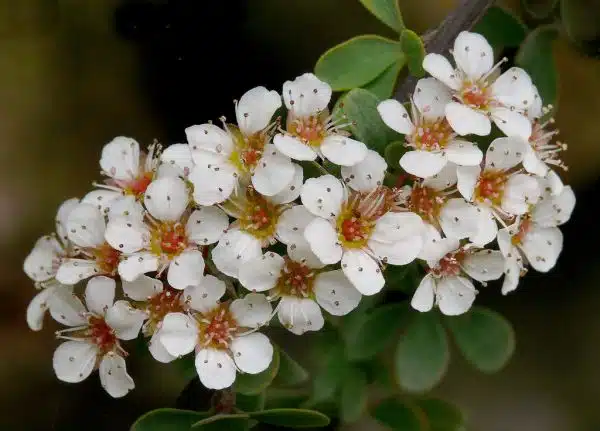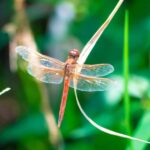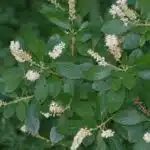Spiraea shrubs are a popular choice for gardeners due to their attractive foliage and delicate blooms that add a touch of elegance to any landscape. These deciduous shrubs come in various sizes, shapes, and colors and are relatively easy to grow and care for. However, like most plants, spiraea requires specific conditions and maintenance practices to thrive.
As a horticulture expert, I have seen many gardeners struggle with growing and caring for spiraea shrubs correctly. Therefore, in this article, we will discuss the essential steps you need to follow to ensure your spiraea shrubs thrive. From the ideal soil type to proper pruning techniques, this guide will equip you with the knowledge needed to grow healthy spiraea shrubs that will beautify your garden year after year.
Understanding Spiraea Shrubs
Spiraea shrubs are a popular choice in landscaping due to their stunning blooms and easy maintenance. These deciduous plants belong to the Rosaceae family, with over 80 species found in temperate regions of the Northern Hemisphere. The most commonly grown species are Spiraea japonica, Spiraea betulifolia, and Spiraea prunifolia.
Growing conditions for spiraea shrubs vary slightly depending on the species. Generally, these shrubs prefer full sun to partial shade and well-draining soil. They can tolerate a wide range of soil types, as long as it is not too wet or too dry. Watering should be done regularly during the growing season but not excessively.
Species identification is essential when growing spiraea shrubs because different species have different pruning requirements. For example, S. japonica requires heavy pruning in late winter or early spring to promote new growth and maintain its shape. On the other hand, S. prunifolia only needs light pruning after flowering to remove dead wood and encourage new growth from the base of the plant.
Choosing the right location for planting spiraea shrubs is crucial for their growth and overall health. In the next section, we will discuss how to select an appropriate site for your spiraea shrub and prepare it for planting.
Choosing The Right Location
When selecting the right location for spiraea shrubs, it is important to consider sunlight, soil conditions, and drainage. Adequate sunlight should be available, as spiraea shrubs need at least 6 hours of direct sunlight each day. The soil should have good drainage and contain organic matter to promote healthy growth. Waterlogging of the roots should be avoided, as spiraea shrubs do not tolerate wet soil. The soil should also be slightly acidic, with a pH range of 5.5 to 6.5 to ensure optimal health. Finally, the soil should be well-draining to prevent root rot.
Sunlight
When it comes to growing and caring for spiraea shrubs, one of the most important factors to consider is sunlight exposure. Spiraeas are known for their love of sunlight, and as horticulture experts, we highly recommend planting them in a location with plenty of direct sunlight. This will allow the shrub to thrive and produce an abundance of beautiful flowers.
While spiraeas do prefer full sun exposure, they can also tolerate some shade. If you’re considering planting your spiraea in an area that isn’t completely sunny, make sure it still gets at least 4-6 hours of direct sunlight per day. Additionally, be mindful of any trees or other plants that may cast shade over your spiraea throughout the day. Keep in mind that too much shade can lead to decreased growth and fewer blooms.
Overall, when choosing the right location for your spiraea shrub, it’s essential to prioritize sunlight exposure. As long as you plant it in a spot with plenty of direct sunlight or partial shade at minimum, your spiraea should thrive and provide you with years of beautiful blooms. With proper care and attention to its needs, this stunning shrub can be a true centerpiece in any landscape or garden design.
Soil Conditions
When it comes to planting and caring for spiraea shrubs, choosing the right location is crucial. In addition to ensuring that the shrub receives sufficient sunlight exposure, it’s also essential to consider soil conditions. Spiraeas thrive in well-draining soil with a pH level between 5.0 and 6.5.
The ideal soil for spiraeas should be rich in nutrients and have good water retention capabilities while also allowing excess water to drain away easily. This ensures that the roots receive adequate moisture without becoming waterlogged, which can lead to root rot and other issues. Additionally, maintaining proper soil pH levels is important because it affects nutrient availability and uptake by the plant.
In summary, when choosing a location for your spiraea shrub, it’s essential to consider both sunlight exposure and soil conditions. The ideal spot will have well-draining soil with a pH level between 5.0 and 6.5 that is rich in nutrients and provides good water retention capabilities while also allowing excess water to drain away easily. By paying attention to these factors, you can ensure that your spiraea thrives and produces an abundance of beautiful blooms year after year.
Drainage
As a horticulture expert, choosing the right location for your spiraea shrub is crucial for its growth and development. Aside from considering the amount of sunlight exposure, soil conditions are also essential. One of the factors to consider is improving drainage, which affects the plant’s ability to absorb nutrients and moisture.
Spiraeas thrive in well-draining soil that allows excess water to flow away easily. This means that soil composition plays a vital role in ensuring proper drainage for your shrub. A mixture of organic matter and mineral components can help improve the soil structure, allowing water to penetrate through without becoming waterlogged. This ensures that your spiraea can absorb moisture without damaging its roots due to excessive watering.
To improve drainage further, you may add sand or perlite to the soil mix. These materials help create air pockets within the soil, promoting better aeration and reducing waterlogging. Maintaining proper soil pH levels between 5.0 and 6.5 also aids in nutrient uptake by your spiraea shrub. By considering these factors, you can ensure that your spiraea thrives in an ideal location with excellent drainage and optimal growing conditions.
Soil Preparation
Ironically, even though the location of your spiraea shrubs is important, it won’t matter if you don’t prepare the soil properly. Soil preparation is crucial to ensure that the shrubs receive the nutrients they need to grow and remain healthy. Before planting, test the soil’s pH level and adjust it as necessary to make sure it’s between 5.5 and 7.0.
Spiraea shrubs have specific nutrient requirements that must be met for optimal growth. They require well-draining soil that’s rich in organic matter, such as compost or aged manure. While they can tolerate a wide range of soil types, ensuring that there are enough nutrients available is essential for their health. By incorporating organic matter into the soil before planting, you’ll provide a steady supply of nutrients throughout the growing season.
To determine the right amount of fertilizer to use on your spiraea shrubs, consider their age and size. Younger plants will require less fertilizer than mature ones, while smaller plants will need less than larger ones. A general rule of thumb is to use one pound of balanced fertilizer (10-10-10) per inch of trunk diameter per year. Apply the fertilizer in early spring before new growth appears and again in late summer after flowering has stopped.
| Nutrient | Function | Sources |
|---|---|---|
| Nitrogen (N) | Promotes leafy growth and overall plant vigor | Blood meal, fish emulsion, cottonseed meal |
| Phosphorus (P) | Supports root development and flower production | Bone meal, rock phosphate |
| Potassium (K) | Helps with disease resistance and stress tolerance | Greensand, kelp meal |
Transitioning into watering needs: To ensure proper nutrient uptake by your spiraea shrubs, it’s important to also consider their watering needs.
Watering Needs
Spiraea shrubs require regular watering to thrive. The frequency of watering depends on the climate and soil conditions. In general, it is recommended to water the shrubs once a week during the growing season. However, if the weather is particularly hot and dry, or if the soil is sandy and drains quickly, more frequent watering may be necessary.
Irrigation methods are also important to consider when caring for Spiraea shrubs. Overhead irrigation should be avoided as it can cause fungal diseases and damage leaves and flowers. Instead, opt for drip irrigation or soaker hoses that deliver water directly to the root zone without wetting the foliage.
It is essential to monitor your Spiraea shrubs’ watering needs regularly to prevent underwatering or overwatering. Signs of underwatering include wilting leaves, brown leaf tips, and stunted growth. On the other hand, overwatering can lead to root rot and other fungal diseases. To avoid these problems, ensure that the soil is moist but not waterlogged at all times.
Moving onto fertilizing requirements for Spiraea shrubs…
Fertilizing Requirements
When it comes to fertilizing spiraea shrubs, gardeners have two options: organic fertilizers and chemical fertilizers. Organic fertilizers are derived from natural sources like compost, manure, and bone meal. Chemical fertilizers, on the other hand, are manufactured in a lab and contain specific amounts of nutrients that plants need to thrive.
Organic fertilizers provide numerous benefits to spiraea shrubs. They improve soil structure and fertility, increase water retention, and promote healthy root growth. Additionally, organic fertilizers contain a variety of micronutrients that plants need for optimal health. However, organic fertilizers can take longer to break down than chemical fertilizers and may not provide immediate results.
Chemical fertilizers offer a quick fix to nutrient deficiencies in spiraea shrubs. They are easy to apply and provide instant results due to their fast-acting nature. However, overuse of chemical fertilizers can lead to nutrient imbalances in the soil and harm beneficial microorganisms. Gardeners should use caution when applying chemical fertilizers and follow instructions carefully.
Now that we have discussed the benefits of both organic and chemical fertilizers for spiraea shrubs, it is important to note that a balanced approach is often best. Gardeners should aim for a mix of both types of fertilizer throughout the growing season. By doing so, spiraea shrubs receive a steady supply of nutrients without sacrificing soil health or harming beneficial organisms. In the next section, we will discuss sunlight requirements for spiraea shrubs – an essential factor in their overall health and wellbeing.
Sunlight Requirements
Without adequate sunlight, Spiraea shrubs would struggle to thrive and produce healthy foliage. It is crucial to provide these shrubs with optimal exposure to sunlight, as this will allow them to photosynthesize properly and generate the energy required for growth. Spiraea shrubs are known for their shade tolerance, but it is still essential to ensure that they receive at least six hours of direct sunlight daily.
The best location to plant Spiraea shrubs is in a spot with full sun exposure. This location should have no obstructions that could block sunlight during different times of the day. A south-facing position will also provide the plants with maximum sunshine throughout the day. If a garden does not have full sun exposure, it is possible to plant the Spiraea shrubs in partial shade areas. However, it would be best if you still ensured they receive a minimum of six hours of direct sunlight daily.
The amount of light required by Spiraea shrubs can vary depending on the species and cultivar. For instance, some cultivars require more sunlight than others to thrive well. As such, it is essential to research each variety’s needs before planting them in your garden or landscape beds. With proper exposure to sunlight, your Spiraea shrubs will grow robustly and produce beautiful blooms year after year with minimal maintenance requirements.
To maintain healthy growth and an attractive appearance, pruning techniques are essential for Spiraea shrubs.
Pruning Techniques
Pruning is an essential part of growing and caring for spiraea shrubs. It helps maintain their shape, improve their overall health, and encourage new growth. Pruning frequency depends on the type of spiraea shrub you have and its growth rate. In general, it’s best to prune in late winter or early spring before new growth appears.
Before pruning your spiraea shrubs, make sure you have the right tools. You’ll need a pair of sharp pruning shears or loppers for cutting branches up to 1 inch in diameter. For thicker branches, use a pruning saw. Make sure your tools are clean and sharp to prevent damage to the plant. After each cut, disinfect your blades with rubbing alcohol to prevent the spread of diseases.
To prune your spiraea shrubs, start by removing any dead, damaged, or diseased branches. Cut them back to healthy wood using a diagonal cut just above a bud or branch junction. This will encourage new growth from below the cut. Next, remove any crossing or rubbing branches that may cause damage or inhibit airflow within the shrub. Finally, trim back any overly long or leggy branches to maintain the desired shape of the plant.
Pruning your spiraea shrubs can be intimidating at first, but with practice and patience, you’ll become an expert in no time! Remember to always use clean and sharp pruning tools and prune at the right time depending on your specific type of spiraea shrub. In our next section, we’ll discuss propagation methods for those looking to expand their spiraea collection even further!
Propagation Methods
Spiraea shrubs can be propagated through several propagation techniques such as stem cuttings, layering, and division. Stem cuttings are the most common method of propagating Spiraeas. Cut a 6-inch-long piece of stem with at least one pair of leaves attached to it from an established plant. Remove the bottom leaves and dip the end in rooting hormone before planting it in a pot filled with well-draining soil. Keep the soil moist and place the pot in a warm, bright area but away from direct sunlight.
Layering is another propagation technique that works well for Spiraea shrubs. Begin by choosing a low-lying branch that can reach the ground easily. Bend the branch down and make a small cut on its underside where it touches the ground. Cover this area with soil or compost and keep it moist until roots begin to grow. Once roots have developed, sever the new plant from the parent plant and transplant it into a new location.
When sourcing Spiraea shrubs from nurseries, look for healthy plants that are free from pests and diseases. Inspect their root system carefully to ensure they are not pot-bound or root-bound as these lead to poor growth performance after planting. Choose plants that have good branching structure and show no signs of wilting or yellowing leaves.
Moving on to pest and disease management, Spiraea shrubs are generally resistant to pests but may suffer from occasional infestations of spider mites, scale insects, or aphids. Diseases such as powdery mildew or rust may also occur under moist conditions, so avoid overwatering your plants. Regular inspection of your Spiraeas is crucial for early detection and treatment of any pest or disease problems before they get out of control.
Pest And Disease Management
With proper care and attention, spiraea shrubs can thrive in your garden for years to come. However, like any other plant, they are susceptible to pest infestations and diseases. Integrated Pest and Disease Management (IPDM) is an effective approach that combines different strategies to control pests and diseases. This method emphasizes the use of natural remedies before resorting to chemical pesticides.
One way to prevent pest infestations is by keeping a watchful eye on your spiraea shrubs, especially during the growing season. Common pests that affect spiraea include aphids, spider mites, and scale insects. If you notice any signs of infestation such as wilting leaves or discolored foliage, remove the affected parts immediately. You can also prune heavily infected branches or use a strong stream of water to wash off smaller pests.
In addition to physical removal of pests, IPDM also involves using natural remedies such as neem oil, insecticidal soaps, and garlic sprays. These options are less toxic than chemical pesticides and do not harm beneficial insects such as bees and ladybugs. Regularly applying these remedies can help keep pests at bay without causing harm to your spiraea shrubs or the environment.
Transition: While IPDM is crucial for preventing pest and disease damage in your spiraea shrubs throughout the growing season, it’s important not to overlook winter care. In the next section, we’ll discuss how to properly prepare your shrubs for the colder months ahead.
Winter Care
Winter Care:
Spiraea shrubs are hardy and can withstand winter temperatures, but it is still important to protect them from frost. To do this, wrap the shrub with burlap or a similar material to insulate it from freezing temperatures. This will help prevent damage to the branches and foliage during cold snaps. It is also essential to remove any snow buildup from the shrub, as heavy snow can weigh down the branches and cause them to break.
Mulching is an essential part of winter care for spiraea shrubs. A layer of mulch around the base of the plant can help regulate soil temperature and retain moisture, which is crucial during dry winter months. Mulch also provides a layer of protection against extreme temperature fluctuations that can be damaging to the roots. However, take care not to pile mulch up against the trunk of the shrub, as this can lead to rot and other problems.
Protecting your spiraea shrubs during winter is essential for their long-term health and performance. Proper mulching techniques combined with frost protection will give your plants a better chance of surviving harsh winters. In our next section, we will discuss how companion planting can benefit your spiraea shrubs by providing additional benefits such as pest control and nutrient absorption.
Companion Planting
Companion planting is a popular technique used in gardening to enhance the growth and health of plants. Spiraea shrubs can greatly benefit from companion planting, as it helps create a diverse and balanced ecosystem in your garden. By planting certain plants next to spiraeas, you can help repel pests and attract beneficial insects, improve soil quality, and even increase yield.
One of the most common benefits of companion planting for spiraeas is pest control. For example, planting herbs such as basil or mint near spiraeas can help repel harmful insects like aphids and mites. Similarly, marigolds are known to repel nematodes that can attack spiraea roots. By incorporating these plants into your garden design, you can reduce the need for pesticides and promote a healthier environment for your spiraea shrubs.
Companion planting also allows for creative design ideas that enhance the aesthetics of your garden. Pairing different colors and textures together creates a visually appealing landscape that is also functional. Consider planting low-growing creeping thyme or sedum around the base of taller spiraeas to create a layered effect. Alternatively, plant native wildflowers alongside your spiraeas to attract pollinators and add bursts of color throughout the season.
With companion planting, there are endless possibilities for designing a thriving garden ecosystem that benefits both your spiraea shrubs and other plants in your space. In the next section, we will explore some common varieties of spiraea that you may want to consider incorporating into your garden design.
Common Varieties Of Spiraea
Spiraea shrubs come in different varieties, each with its unique characteristics. Among the most common spiraea shrubs are the Bridal Wreath Spiraea, Gold Flame Spiraea, and Little Princess Spiraea. The Bridal Wreath Spiraea is known for its cascading branches that produce clusters of white flowers. On the other hand, the Gold Flame Spiraea boasts of beautiful foliage that changes colors from bronze to yellow to red as the season progresses. Lastly, the Little Princess Spiraea is a compact shrub that produces pink flowers in early spring.
Pruning spiraea shrubs is essential for maintaining their health and shape. Ideally, pruning should be done after flowering or in late winter or early spring before new growth appears. When pruning, remove dead, diseased or damaged wood and cut back up to one-third of old stems to encourage new growth. Pruning will also help you control the size and shape of your spiraea shrubs.
Different colors of spiraea shrubs add beauty to any garden landscape. Their colorful foliage can serve as background plants when mixed with other flowering plants like roses or used as a focal point in mixed borders. You can also plant them en masse for an impressive display of color and texture. In addition, using spiraea shrubs as hedges or screens can provide privacy while adding aesthetic value to your outdoor space. Overall, incorporating spiraea shrubs into your garden design adds diversity and interest to your landscape while providing easy maintenance for years to come.
Using Spiraea Shrubs In Landscaping
Common Varieties of Spiraea have their unique features that make them stand out in the garden. Now, let’s move on to how you can incorporate spiraea shrubs into your landscaping designs. These plants are versatile and can be used to create beautiful garden arrangements.
Spiraea shrubs are perfect for creating hedges, borders, and foundation plantings. They can also be used as accents or specimen plants in larger landscape designs. When planting spiraea, choose a location with well-draining soil and full sun exposure. These plants prefer slightly acidic soil with a pH range of 5.0 to 6.5.
In garden arrangements, Spiraea shrubs can be combined with other flowering shrubs and perennials for a stunning display of color and texture. They look particularly striking when paired with pink or white roses, purple salvia, and blue delphiniums. With their natural arching habit, they add a graceful touch to any landscape design. Spiraea shrubs also attract butterflies and bees, making them an excellent addition to any pollinator garden.
Moving forward to frequently asked questions about spiraea shrubs, it is essential to understand the care requirements to ensure optimal growth and health of these plants.
Frequently Asked Questions About Spiraea Shrubs
Planting season for spiraea shrubs depends on the species and location. For instance, Bridal Wreath Spiraea should be planted in fall while Japanese White Spiraea is best planted in springtime. It is important to choose a spot with well-draining soil, adequate sunlight, and good air circulation. Also, ensure that the planting hole is deep enough to accommodate the roots of your spiraea shrub.
Maintenance tips for spiraea shrubs include regular watering, pruning, and fertilizing. Water your plant deeply once or twice a week to encourage healthy growth. Also, avoid overwatering as this can lead to root rot. Prune your spiraea shrub after flowering to maintain its shape and promote new growth. Finally, fertilize your plant at least once a year using a balanced fertilizer.
In conclusion, growing and caring for spiraea shrubs can be an enjoyable experience when done correctly. By following the right planting season guidelines and maintenance tips such as regular watering, pruning, and fertilizing; you can keep your spiraea shrub healthy and vibrant all year round. With these steps in place, you will have no problem keeping your plant healthy and lush for years to come!
Conclusion: Growing And Caring For Spiraea Shrubs
After answering some frequently asked questions about Spiraea shrubs, it’s time to delve deeper into the topic of growing and caring for these beautiful plants. Spiraea is a versatile shrub that can be used as a hedge, border plant, or specimen in your garden. It is popular for its showy blooms, easy care, and ability to attract pollinators like bees and butterflies.
One of the benefits of Spiraea is its adaptability to different soil types and growing conditions. However, for successful growth, plant your Spiraea in well-draining soil that receives full sun to partial shade. Water regularly during the first year after planting to establish healthy roots. After that, they are relatively drought-tolerant.
To ensure healthy growth and abundant blooms, pruning is an essential part of caring for Spiraea shrubs. Prune your plants in early spring before new growth appears to remove any dead or damaged branches and shape the plant as desired. Deadheading spent flowers throughout the blooming season will encourage additional blooms.
By following these tips for successful growth and care of Spiraea shrubs, you can enjoy their beauty in your garden year after year. With a little attention and regular maintenance, you can maintain healthy plants with showy blooms that will add color and interest to your landscape.
Frequently Asked Questions
Can Spiraea Shrubs Tolerate Extreme Heat Conditions?
Spiraea shrubs, also known as meadowsweets, are a popular ornamental plant due to their beautiful flowers and easy maintenance. When it comes to extreme heat conditions, the spiraea shrub can tolerate them fairly well, as long as its watering needs are met. It requires regular watering during hot and dry weather to ensure that the soil remains moist enough for its survival. The soil requirements for spiraea shrubs include well-drained soils with a slightly acidic pH level between 5.0 and 6.0. These plants are relatively low-maintenance, making them an excellent choice for gardeners who want to add beauty to their landscape without a lot of extra work.
How Long Does It Typically Take For Spiraea Shrubs To Reach Their Mature Size?
Factors affecting the growth rate of Spiraea shrubs include soil type, sunlight exposure, and water availability. Depending on these factors, the mature size of Spiraea shrubs can vary greatly. On average, it takes Spiraea shrubs about two to four years to reach their mature size, which can range from three to six feet in height and width. However, variations in growth rate and mature size may occur due to environmental conditions and individual plant genetics. As a horticulture expert, it is recommended to monitor the growth rate of Spiraea shrubs regularly and adjust care accordingly to ensure optimal development.
Are There Any Particular Pests Or Diseases That Are Especially Common In Spiraea Shrubs?
Spiraea shrubs are generally hardy and resistant to most pests and diseases. However, common pests that can attack these shrubs include aphids, spider mites, and scale insects. Preventative measures such as regular pruning, removing deadwood, and maintaining good air circulation around the plant can help prevent infestations. Additionally, using insecticidal soap or horticultural oil can be effective in controlling pests if an infestation does occur. In terms of diseases, spiraea shrubs are susceptible to fungal diseases such as powdery mildew and rust. Proper irrigation techniques to avoid overwatering and adequate spacing between plants can help prevent these diseases. Fungicides can also be used to treat an infected plant. Overall, with proper care and maintenance practices in place, spiraea shrubs can thrive without significant pest or disease issues.
Can Spiraea Shrubs Be Grown In Containers Or Do They Require A Larger Planting Area?
Spiraea shrubs, with their compact size and beautiful blooms, are ideal for container gardening. While they may seem delicate, these shrubs can thrive in containers if provided with the right soil and nutrients. It is important to use a well-draining soil mix that is rich in organic matter and to ensure that the container has adequate drainage holes. Spiraeas require regular watering, especially during hot weather when the soil can dry out quickly. Fertilizing should also be done periodically to maintain optimal growth and health. With proper care, spiraea shrubs can thrive in containers and add beauty to any outdoor space.
Is It Necessary To Prune Spiraea Shrubs Every Year, Or Only When They Become Overgrown?
Spiraea shrubs are relatively easy to maintain and require minimal pruning, with some exceptions. Pruning frequency depends on the specific variety of Spiraea and its growth habit. It is generally recommended to prune annually to prevent overgrowth and maintain a desirable shape. Neglecting to prune may result in an unsightly appearance, decreased flowering, and potential pest or disease issues. To avoid overgrowth, it is best to trim back the tips of new shoots in the spring or early summer before they become too long. Overall, proper pruning practices can help promote healthy growth and longevity for Spiraea shrubs.
Conclusion
Spiraea shrubs are a beautiful addition to any garden or landscape. With proper care and attention, these shrubs can thrive in a variety of conditions. While they can tolerate some heat, extreme temperatures may cause stress to the plant. It typically takes several years for spiraea shrubs to reach their mature size, but with proper fertilization and watering, growth can be encouraged.
Spiraea shrubs can be susceptible to pests such as spider mites and diseases like powdery mildew. Keeping the plants healthy and properly irrigated can help prevent these issues from occurring. While spiraea shrubs can be grown in containers, they do require a larger planting area in order to fully develop.
Pruning should be done regularly to keep the shrub looking full and healthy, but it is not always necessary every year. As horticulture experts, we recommend pruning when the shrub becomes overgrown or after it has finished blooming for the season. By following these simple guidelines, you can enjoy the beauty of spiraea shrubs in your own garden or landscape for years to come.
Imagine a well-manicured garden as a symphony orchestra. Each instrument plays an essential role in creating a harmonious melody that is pleasing to the ear. In the same way, each plant in your garden plays an important part in creating a beautiful landscape that is pleasing to the eye. Spiraea shrubs are like the strings section of this orchestra – delicate yet strong, capable of producing sweet melodies that compliment other instruments around them.
As horticulture experts, we understand how important it is to care for each plant in your garden with precision and care. By providing your spiraea shrubs with proper irrigation, fertilization and pruning when needed, you will allow them to flourish into stunning specimens that will bring joy and beauty to your outdoor space. Like a skilled conductor leading an orchestra through complex musical scores, you too can create a masterpiece with your garden by nurturing each plant to its fullest potential.
Image Credits
- “Spiraea arcuata #2” by J.G. in S.F. (featured)





























